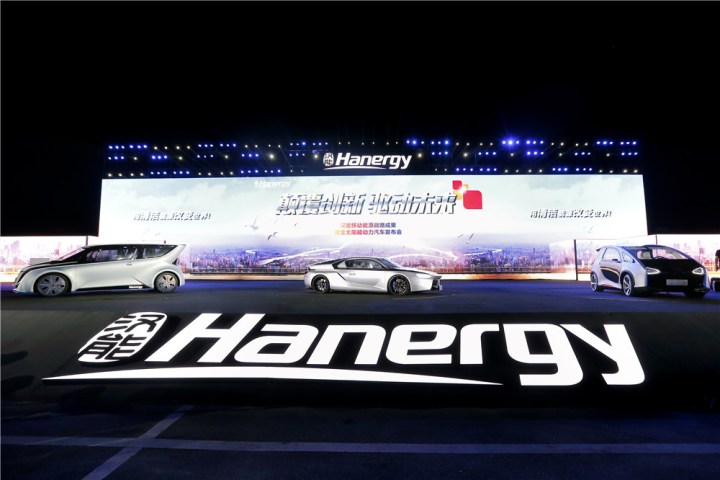
The sun-powered concepts are called Solar R, Solar O, Solar A, and Solar L, respectively. All four models are fitted with anywhere from 38 to 81 square feet of thin-film solar panels that boast an energy conversion rate of 31.6 percent, a record according to the United States’ National Renewable Energy Laboratory (NREL). The technology was developed in-house by Hanergy.
The solar panels generate anywhere between eight to ten kilowatts of electricity after sitting in the sun for five or six hours. That’s good for about 50 miles of range, which is enough to cover the daily needs of most motorists who live and work in a city. Motorists who need to drive farther — or who can’t find six hours of sunlight due to China’s spectacular smog — can get about 220 miles of range by topping up the lithium-ion battery pack at a charging station. To put that figure into perspective, the Nissan Leaf can drive for up to 107 miles on a single charge.
A purpose-designed smartphone application lets owners decide how the battery pack is charged, while ultrasonic cleaning technology ensures that the panels never need to be hosed off. While the drivetrain sounds promising on paper, Bloomberg points out that Hanergy has been in dire financial straits for the past year, and it has consequently delayed the project several times.
Read more: Why you can’t order a Toyota Prius with a roof-mounted solar panel
Hanergy claims the technology is ready for production, but it hasn’t revealed when Chinese motorists will be able to buy one of its cars, and it hasn’t announced plans to break into the North American market. However, the firm has inked a deal with Beiqi Foton Motor, a subsidiary of one of China’s largest carmakers, to develop clean-energy buses for the local market.
Editors' Recommendations
- Watch this famous musician fly in a car with wings
- EV warranties aren’t like those for non-electric cars. Here’s what you should know
- The upcoming Windows ARM laptops may have surprisingly powerful GPUs
- Porsche’s most powerful production car is an EV
- The Apple Car was reportedly dubbed ‘the Bread Loaf’




